Artemisia anomala
Artemisia anomala
1. The products in our compound library are selected from thousands of unique natural products; 2. It has the characteristics of diverse structure, diverse sources and wide coverage of activities; 3. Provide information on the activity of products from major journals, patents and research reports around the world, providing theoretical direction and research basis for further research and screening; 4. Free combination according to the type, source, target and disease of natural product; 5. The compound powder is placed in a covered tube and then discharged into a 10 x 10 cryostat; 6. Transport in ice pack or dry ice pack. Please store it at -20 °C as soon as possible after receiving the product, and use it as soon as possible after opening.
Natural products/compounds from Artemisia anomala
- Cat.No. Product Name CAS Number COA
-
BCN2529
Jaceosidin18085-97-7
Instructions
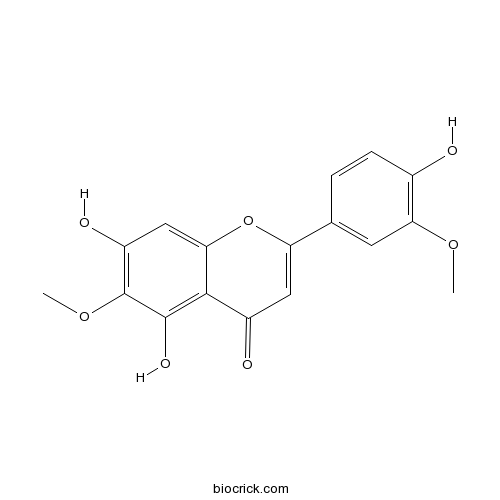
-
BCN7783
4-Methoxysalicylic acid2237-36-7
Instructions
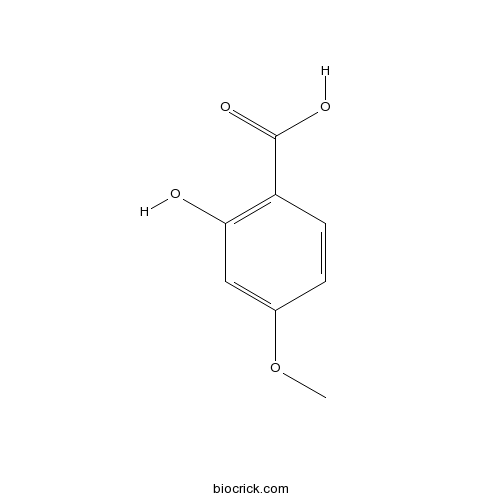
-
BCN2327
Isofraxidin486-21-5
Instructions
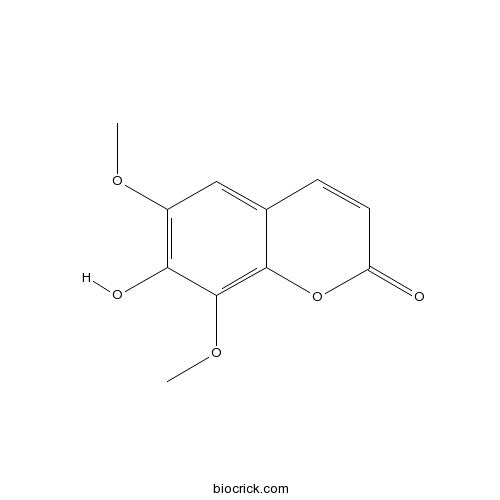
-
BCN5600
Luteolin491-70-3
Instructions
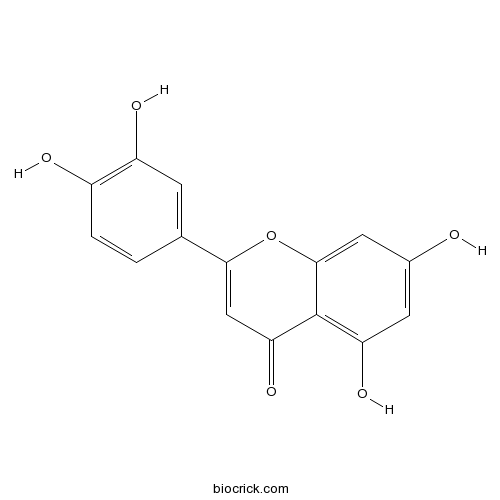
-
BCN2356
Diosmetin520-34-3
Instructions
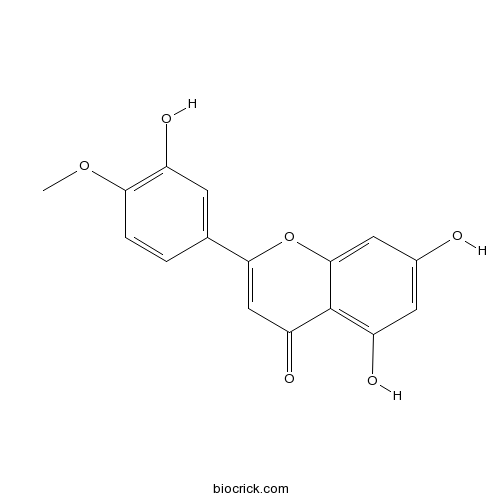
-
BCX1035
Isoferulic Acid537-73-5
Instructions
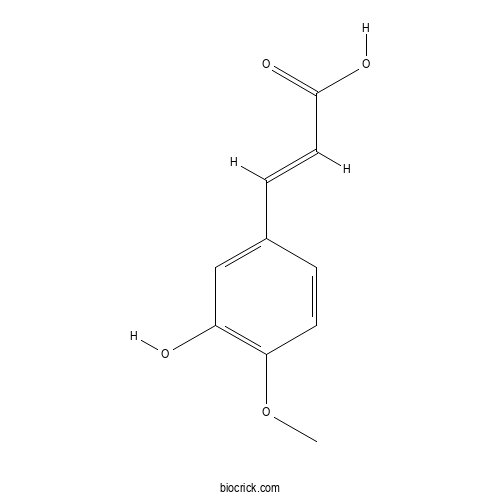
-
BCN5771
Avicularin572-30-5
Instructions
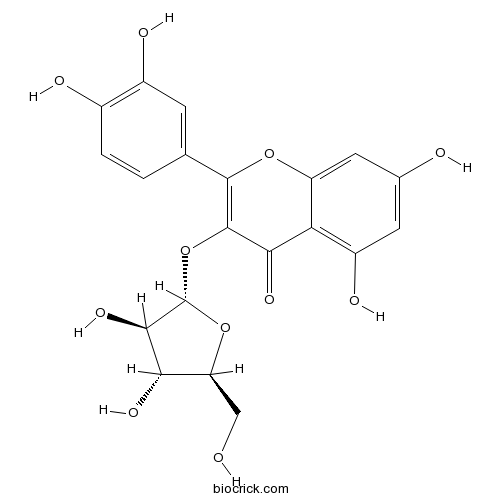
Ethyl Acetate Extract of Artemisia anomala S. Moore Displays Potent Anti-Inflammatory Effect.[Pubmed: 24744815]
Artemisia anomala S. Moore has been widely used in China to treat inflammatory diseases for hundreds of years. However, mechanisms associated with its anti-inflammatory effect are not clear. In this study, we prepared ethyl acetate, petroleum ether, n-BuOH, and aqueous extracts from ethanol extract of Artemisia anomala S. Moore. Comparing anti-inflammatory effects of these extracts, we found that ethyl acetate extract of this herb (EAFA) exhibited the strongest inhibitory effect on nitric oxide (NO) production in LPS/IFN γ -stimulated RAW264.7 cells. EAFA suppressed the production of NO in a time- and dose-dependent manner without eliciting cytotoxicity to RAW264.7 cells. To understand the molecular mechanism underlying EAFA's anti-inflammatory effect, we showed that EAFA increased total cellular anti-oxidant capacity while reducing the amount of inducible nitric oxide synthase (iNOS) in stimulated RAW264.7 cells. EAFA also suppressed the expression of IL-1 β and IL-6, whereas it elevates the level of heme oxygenase-1. These EAFA-induced events were apparently associated with NF- κ B and MAPK signaling pathways because the DNA binding activity of p50/p65 was impaired and the activities of both ERK and JNK were decreased in EFEA-treated cells comparing to untreated cells. Our findings suggest that EAFA exerts its anti-inflammatory effect by inhibiting the expression of iNOS.
[Analysis on anti-vascular inflammatory mechanism in vitro of total flavones from Artemisia anomala].[Pubmed: 23236759]
To study the impact of total flavones from Artemisia anomala (TFAS) on activation of macrophages, cell oxidative stress, auto-nitration of CuZn-SOD, platelet aggregation and isolated vascular tension.
New guaianolides from Artemisia anomala.[Pubmed: 22296150]
Two new guaianolides artemanomalides A and B were isolated from the aerial parts of Artemisia anomala S. Moore. Their structures were characterized as 2-oxo-5α, 10α-dihydroxy-guaia-3-en-1α, 6β, 7α, 11β H-12, 6-olide (1) and 8α-acetoxy-2-oxo-5α, 10α-dihydroxy-guaia-3, 11(13)-dien-1α, 6β, 7αH-12, 6-olide (2) on the basis of extensive spectroscopic analyses. Compounds 1 and 2 showed inhibitory activities against COX-2 enzyme with IC(50) values of 8.8 and 3.6 μM.
[Flavonoids from Artemisia anomala].[Pubmed: 20939278]
To study the constituents of Artemisia anomala.
Prostaglandin-like fatty acid derivatives from Artemisia anomala.[Pubmed: 20552489]
Four prostaglandin-like fatty acid derivatives anomalone A-D (1-4) were isolated from the aerial part of Artemisia anomala S. Moore. Their structures were determined on the basis of extensive spectroscopic analyses.
Dimeric guaianolides and sesquiterpenoids from Artemisia anomala.[Pubmed: 20000780]
A new dimeric guaianolide (8) and a new glaucolide (3), a seco-guaiaretic acid (4), two guaianolides (6 and 7), and five known sesquiterpene lactones (1, 2, 5, 9, and 10) were isolated from the aerial part of Artemisia anomala. Their structures were determined on the basis of chemical and spectroscopic analysis. In addition, their cytotoxic activities against five human cancer cell lines and anti-COX-2 effects in vitro were evaluated.
Antioxidant activity of 45 Chinese herbs and the relationship with their TCM characteristics.[Pubmed: 18955214]
Here, 45 Chinese herbs that regulate blood circulation were analyzed for antioxidant activity using the oxygen radical absorbance capacity (ORAC) assay. A recent publication by Ou et al. identified a close relationship between in vitro antioxidant activity and classification of Chinese herbs as yin or yang. The 45 Chinese herbs in this study could be assigned the traditional characteristics of natures (cold, cool, hot and warm), flavors (pungent, sweet, sour, bitter and salty) and functions (arresting bleeding, promoting blood flow to relieve stasis, nourishing blood and clearing away heat from blood). These characteristics are generalized according to the theory of yin and yang. We identified a broad range, 40-1990 micromol Trolox Equivalent/g herbs, of antioxidant activity in water extracts. There was no significant correlation between ORAC values and natures or functions of the herbs. There was a significant relationship between flavors and ORAC values. Bitter and/or sour herbs had the highest ORAC values, pungent and/or sweet herbs the lowest. Other flavors had intermediate values. Flavors also correspond with the yin/yang relationship and our results are supportive of the earlier publication. We reported for the first time antioxidant properties of many Chinese herbs. High antioxidant herbs were identified as Spatholobus suberectus vine (1990 micromol TE/g), Sanguisorba officinalis root (1940 micromol TE/g), Agrimonia pilosa herb (1440 micromol TE/g), Artemisia anomala herb (1400 micromol TE/g), Salvia miltiorrhiza root (1320 micromol TE/g) and Nelembo nucifera leaf (1300 micromol TE/g). Antioxidant capacity appears to correlate with the flavors of herbs identified within the formal TCM classification system and may be a useful guide in describing their utility and biochemical mechanism of action.
[Experimental study of 472 herbs with antiviral action against the herpes simplex virus].[Pubmed: 2161714]
Using tissue culture method, the present work with its first-hand observation was primarily concerned with evaluating the antiviral effect of 472 traditional medicinal herbs (comprising raw material 10 mg/ml), through both initial (qualitative) and repeated (quantitative) screens, on type 1 herpes simplex virus. When dealing with water and alcoholic extracts, the effective herbs during initial screens were reduced after repeated screens by a range of 28.8-80.0%. Employing the basic value attained by the simultaneous route of drug administration, a stepwise declining of effective herbs would be: extratube route greater than simultaneous route greater than therapeutic route greater than preventive route. The more the routes of drug administration, the less the multiple-route simultaneous efficacy of a herb. Through repeated screens, 10 highly effective herbs were Aristolochia debilis, Artemisia anomala, Lindera strychnifolia, Patrinia villosa, Pinus massoniana, Prunella vulgaris, Pyrrosia lingua, Rhus chinensis, Sargussum fusiforme and Taraxacum mongolicum. Clinically, among the 78 cases of herpetic keratitis due to HSV1 treated by Pyrrosia lingua and Prunella vulgaris eye drops, a cure was effected in 38 and an improvement in 37, with 3 being of no benefit.


